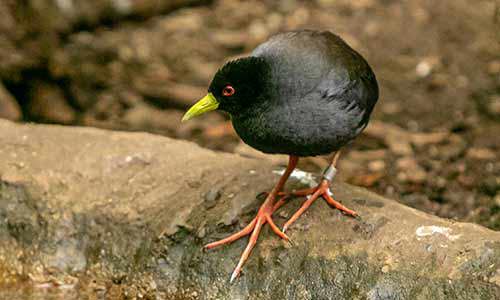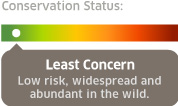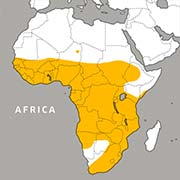Black Crake
Zapornia flavirostra

About the Black Crake

Geographic Range:

Class: Aves
Order: Gruiformes
Family: Rallidae
Genus: Zapornia
Species: flavirostra
The Black Crake is a completely black waterbird that is commonly found in Sub-Saharan Africa. It prefers marsh habitats, and can be seen occasionally feeding on parasites on the backs of hippos or other large animals. Its very distinct appearance makes it easy to tell apart from other bird species.
Black Crake Facts
Appearance:
A completely black waterbird with a short tail and long toes, the crake has a relatively short yellow beak, reddish eyes, and bright orange legs and feet. There are no absolute differences in appearance between the sexes, but most males and up to 10% of females have a slightly hooked upper mandible.
Size:
Weight: 2.5 - 4 ounces
Diet:
Invertebrates, insects, fish, frogs, seeds of aqautic plants, and bird eggs. Crakes can often be seen consuming parasites off of large animals such as hippos.
Reproduction:
The black crake is incredibly territorial of its nest. Often it will attack other crakes or even larger birds to defend its territory. The nest usually consists of reeds and other aquatic plants. Up to six eggs may be produced, with the average being three eggs. They're incubated over a period of 13-19 days.
Behavior:
This species is diurnal, and often most active just after rainfall. Its movements are closely related to seasonal rainfall and formation of temporary water sources. Breeding occurs throughout the year when conditions are suitable, with seasonal peaks occuring just after periods of rain. The crake nests territorially, and usually occurs just in pairs. However, groups up to 10 individuals will occasionally form.
Habitat/range:
Freshwater marshes in Sub-Saharan Africa
Median Life Expectancy:
5.7 years

